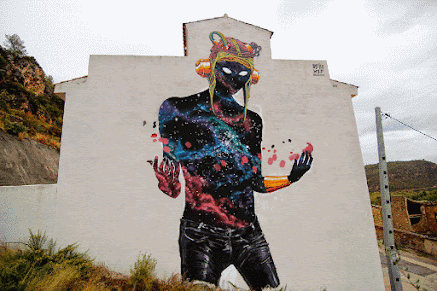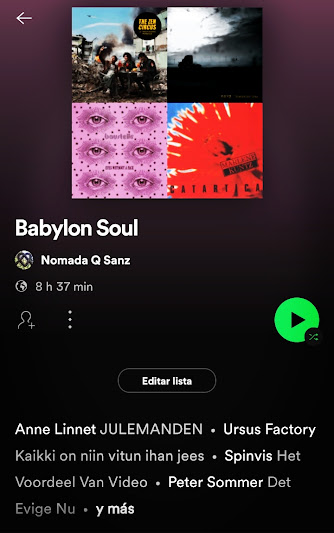El subconsciente puede convertirse en una poderosa herramienta creativa si el caldo de cultivo del que se alimenta reúne los ingredientes optimos, que en el momento adecuado y siempre y cuando se dén las condiciones precisas permitan representar a través de algunas de las muchas disciplinas artisticas.
Ese fragmento de realidad que el artista quiere legar a todos aquellos que en algún momento tengan la oportunidad de acercarse a alguna de sus propuestas. Pudiendo encontrar en alguno de sus matices la interpretación más próxima a la que como individuo observa en su entorno. Una versión en definitiva lo suficientemente documentada que contenga las suficientes rasgos a través de los que reforzar su identidad.
Elementos que ya sean en conjunto o por separado den como resultado una narrativa cuyo estilo e influencia sea lo suficiente nítida, como para que permita al espectador establecer una complicidad con aquellos elementos que conforman su cotidianidad. Que en síntesis y contexto refleje su posible representación en la obra que se despliegá ante sus ojos. Independientemente del formato en que se presente.
Elemento, el del medio que se utiliza para mostrar la obra que toma más relevancia de la que en principio pudiera parecer. Siendo una elección menos gratuita de lo que en un principio se valora, máxime si tenemos en cuenta que el artista suele invertir una parte considerable de su tiempo en la concepción y posterior materialización de la idea que de forma disciplinada y paciente, ha visto nacer primero como un embrión para posteriormente plasmarla generalmente en un esbozo.
Una idea general que finalmente plasmará a través de los medios expresivos que considere más oportunos a la hora de proyectar su trabajo alcanzando las audiencias más amplias posibles. En este contexto de volatilidad permanete. Cada vez son más numerosas iniciativas creativas que se han reinventado alcanzando las más altas cotas de popularidad, gracias a que tomaron la feliz decisión de ampliar los márgenes de digamos del continente material que utilizan para comunicar su obra.
Habiendo sido el espacio público con todos sus reparos y beneficios un acicate para que muchos artistas circunscritos a la más estricta de la ortodoxia, al menos en terminos expositivos. Lo que les ha permitido que su discurso artístico tanto en forma como en fondo se materialice en los ojos de una audiencia más o menos casual, que de otra forma le hubiera sido ajena a su propuesta.
La vertiente urbana de Tytus hace referencia a la ciudad y su transformación
Efecto que en la mayoría de los casos supone una pequeña epifania, pués su obra pasa de ser retundamente desconocida a ser compartida por una cantidad de público cuyo aumento suele ser exponencial y equivalentes a aquellos elementos autotocnos. Que como ya he dicho y reitero están más involucrados en la vida doméstica de los que se asoman a su obra.
Si a version doméstica de estar por casa, el artista Le añade la habilidad de añadirle una determinada perspectiva histórica del lugar y la comunidad en la que vive o ha pasado su infancia. Además de mostrar en su estilo alguna referencia de alguno de los periodos artísticos de su pais tenemos una propuesta con la que es relativamente sencillo conectar.
Salvo matices tanto las obras de carácter formal como las que crea específicamente para el espacio público del artista polaco Tytus Brzozowski obedecen a este contraste. Por una lado establece un continuo diálogo con el paisaje local a través de la arquitectura fundamentalmente mientras se observa la influencia de artistas nativos y más o menos cercanos en el tiempo, como el pintor surrealista Rafal Olbinski.
Los paisajes urbanos del artista Tytus Brzozowski, recuperan para la memoria colectiva edificios y escenas domésticas desde una práctica surrealista.
De cuya obra ya dije en su momento el gran impacto que me causo, y que tuve la oportunidad de redescubrir cuando estuve visitando Varsovia en 2019. Sin embargo en las representaciones corales de Tytus destacan por la polifónia en el tratamiento del color que les da una patina que destaca por su optimismo, mientras que las obras de Rafal beben del barroco.
Obras donde los motivos se diluyen siendo el cuerpo central el objeto sobre el que se construye la narrativa a interpretar por parte del espectador. Mientras que los proyectos de Tytus ya sean los elaborados para lienzo a una escala menor o los grandes murales, que tienen como lugar de operaciones principalmente la capital Polaca, pecan en ocasiones de hipertrofia.
Debido a la gran cantidad de elementos que estan implicados en una trama y subtramas. Y está observación no quiero que se intérprete como algo negativo, Ya que muchos de estos símbolos cuya clave tras ser desvelada permite arrojar luz sobre el contexto de lo que trata el conjunto de lo que se expone. De unas obras cuya versión en exterior al no encontrarse con las limitaciones del lienzo se desatan en un sin fin de pequeñas historias gráficas que a su vez se retro-alimentan un discurso casi infinito.
Murales y cuadros donde la ciudad elevada se complementa con la presencia de la gente
Característica que se puede observar en una de sus últimas propuesetas, que tuvo como escenario (como otras muchas), el distrito de Voila de la capital polaca. Donde Tytus cuenta ya con una dilatada muestra. En este caso el artista selecciono una de los últimos muros laterales que cierra una de los pocos conjuntos de edificios construidos a principio del Siglo XX.
Cuando lo que hasta ese momento había sido una villa situada en las proximidades de la ciudad, había acabado finalmente absorbida por una ciudad en plena expansion. Y que en estos momentos, cuando se ha cumplido poco más de cien años de esta incorporacion. Este barrio situado al Oeste, ha experimentado una transformación en vertical.
Fenómeno muy común en estos tiempos, pasando de presentar un urbanismo digamos heredado de su época provincial. Ha presentarse como parte de lo que ya se conoce como el nuevo y flamante distrito financiero de la ciudad. Considerado como uno de los que más proyección posee en el Este de Europa.
En Wola's Collisseun se representa un distrito que está mudando su fisionomia
Por eso el que ya ha sido como el Warsaw's King, apelativo con el que ha sido bautizado Tytus a nivel popular, debido a la magnificencia y grandiolocuencia de sus intervenciones. En el caso de este mural titulado de forma muy acertada y coherente bajo el apelativo de Wola's Collisseum, nombre que tiene como origen unas ruinas de forma circular adyacentes. Conserva muchos de los parametros que se observan en buena parte de los trabajos realizados para exterior.
Tanto en lo estetico como en el empleo de los materiales para completar la obra. Comenzando por las dimensiones del proyecto una enorme secuencia XXL. Que desarrolla ante nuestros inquietos ojos todo una escena, que según las propias declaraciones del autor, pretende ser un homenaje a la vida cotidiana que hasta hace no mucho tiempo se podía percibir cuando uno recorría sus calles.
Su obra figurativa recurre a constantes elementos decorativos, con los que logra establecer un vínculo con la memoria del lugar que retrata.
Escenas más o menos domésticas que Tytus representa desde una óptica sosegada y natural, y en todo caso muy alejada de una interpretacion nostalgica de un pasaje de la historia vivida por una comunidad, donde la vida familiar y doméstica se contempla como si fueran antecedentes muy distantes en el tiempo e incluso en el espacio, su tratamiento y distribucion.
Pues la narrativa arquitectónica actual caracterizada por colosales edificios levantados a partir de estructuras de acero, que alcanzan por término medio las cincuenta alturas. Estructuras envueltas por kilométricas vidrieras ahumadas que se alternan con las espejadas que proyectan el edificio dotándole de más protagonismo si cabe.
Efecto amplificado de un paisaje urbano contemporáneo y cosmopolita, que contrasta con el nutrido grupo de casas representados en el mural. Edificaciones que en la mayoría de los casos no superan las dos alturas. Aunque el fragmento alrededor del que gira está obra de tres cuerpos es sin duda el par de tanques de gas visibles desde la estación de Zachodnia.
Erigidas durante la Revolución Industrial, estas dos rotondas fueron finalmente desmanteladas en 1978 y desde entonces se han convertido en un coto de caza favorito para los exploradores urbanos. Además de estos tanques de gas, el mural también representa graneros que fueron destruidos durante el asedio de Varsovia en septiembre de 1939, además de las innumerables fábricas históricas de Wola representadas por una chimenea de ladrillo.
El mural que se puede visitar en Wschowska 10, ha sido elaborado con una gama de pinturas en su totalidad con anti-smog y creadas a propósito para neutralizar los óxidos de nitrógeno y otros contaminantes. Un criterio relevante en la consecución de esta obra en términos medio-ambientales, pues es el autor estima que se ha conseguido evitar la tala de cientos de arboles.







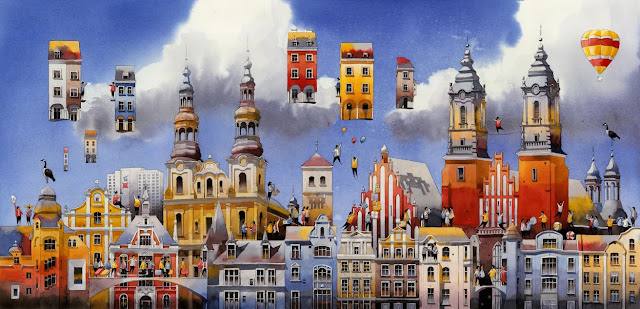



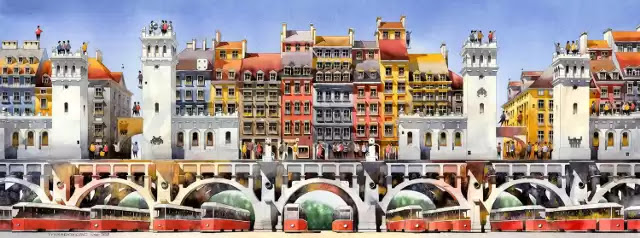



.jpg)

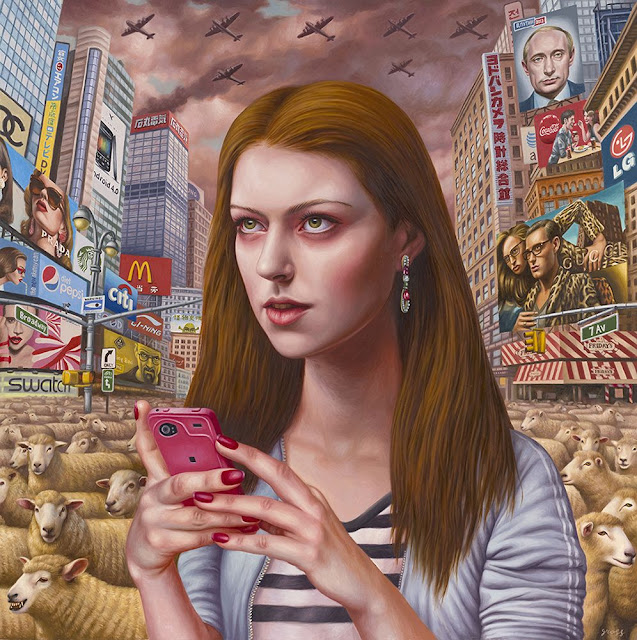





















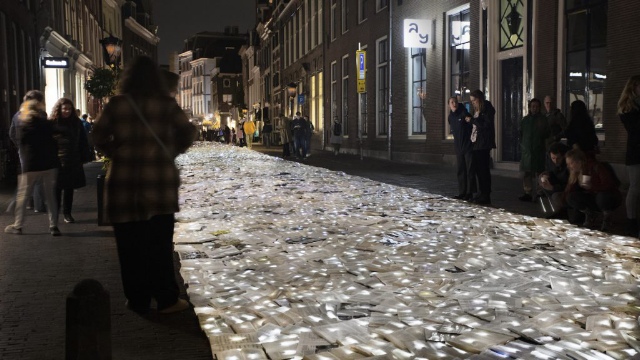


.jpg)



.webp)









_edit_188822180547080.png)
_edit_8099193296908.jpg)







.jpg)




